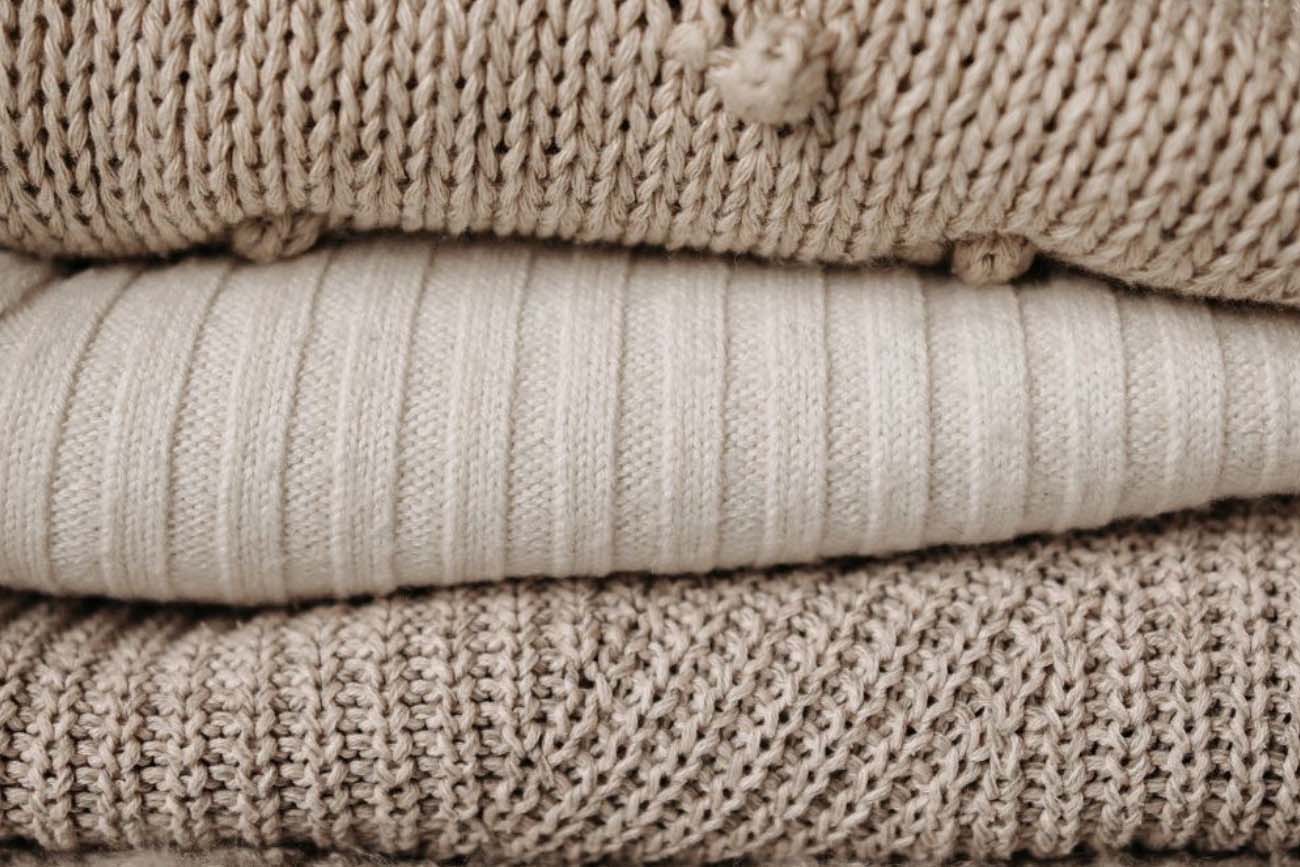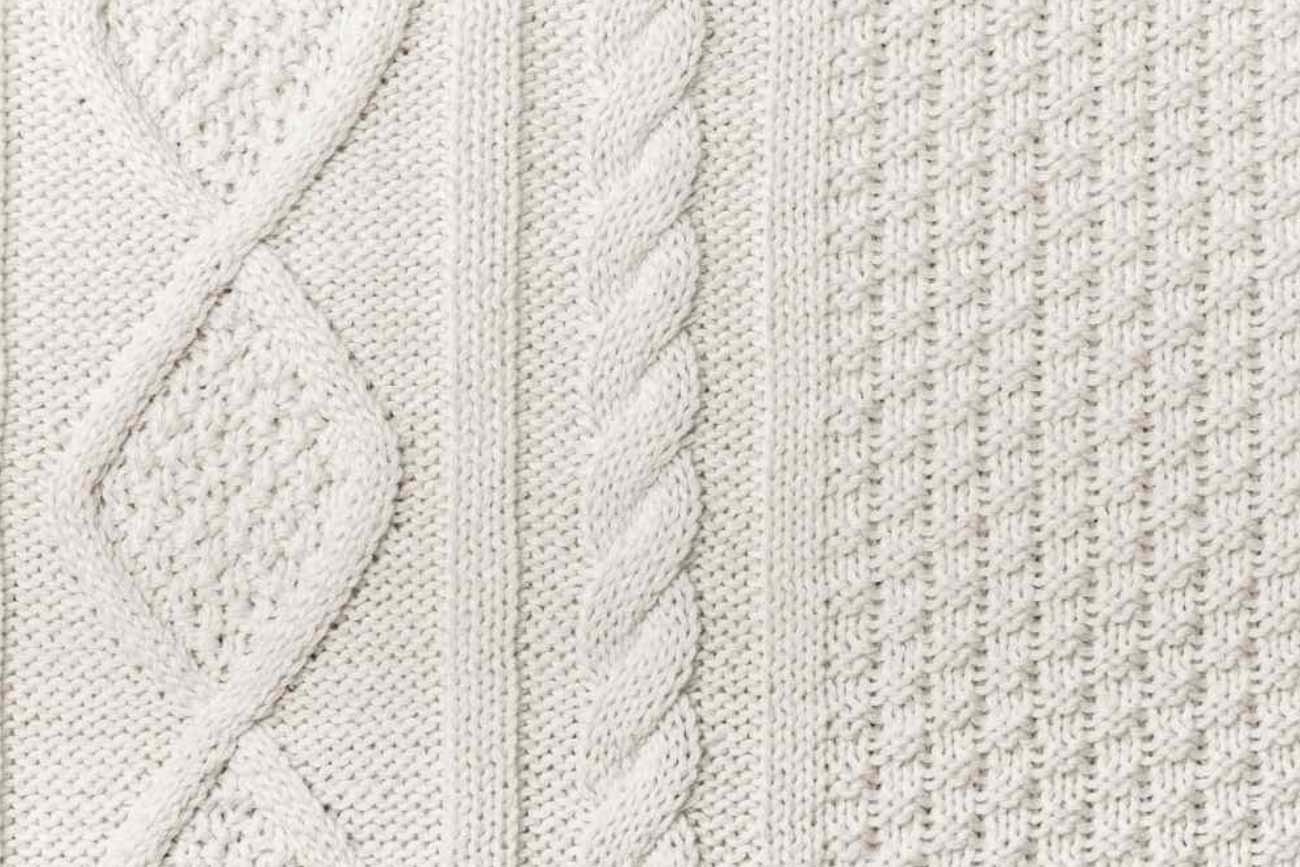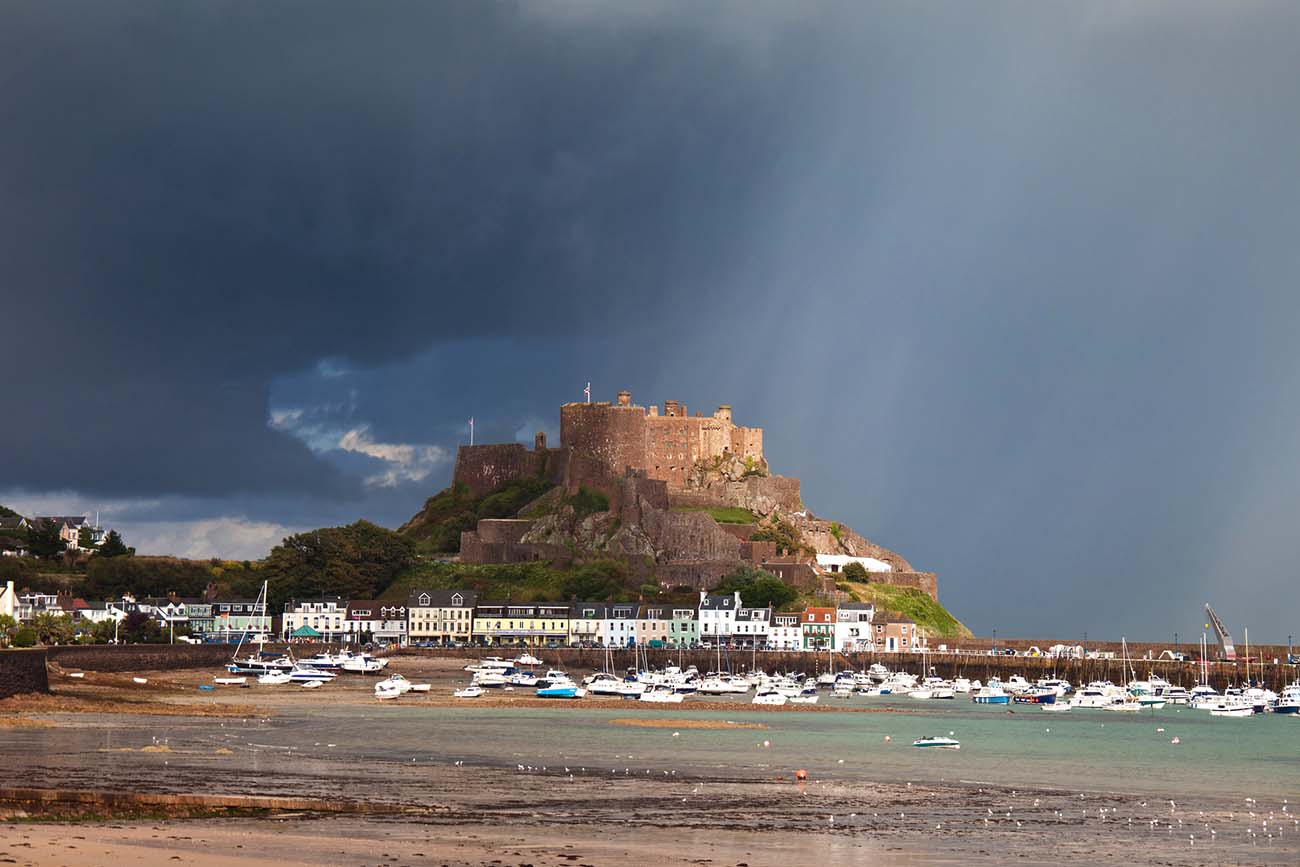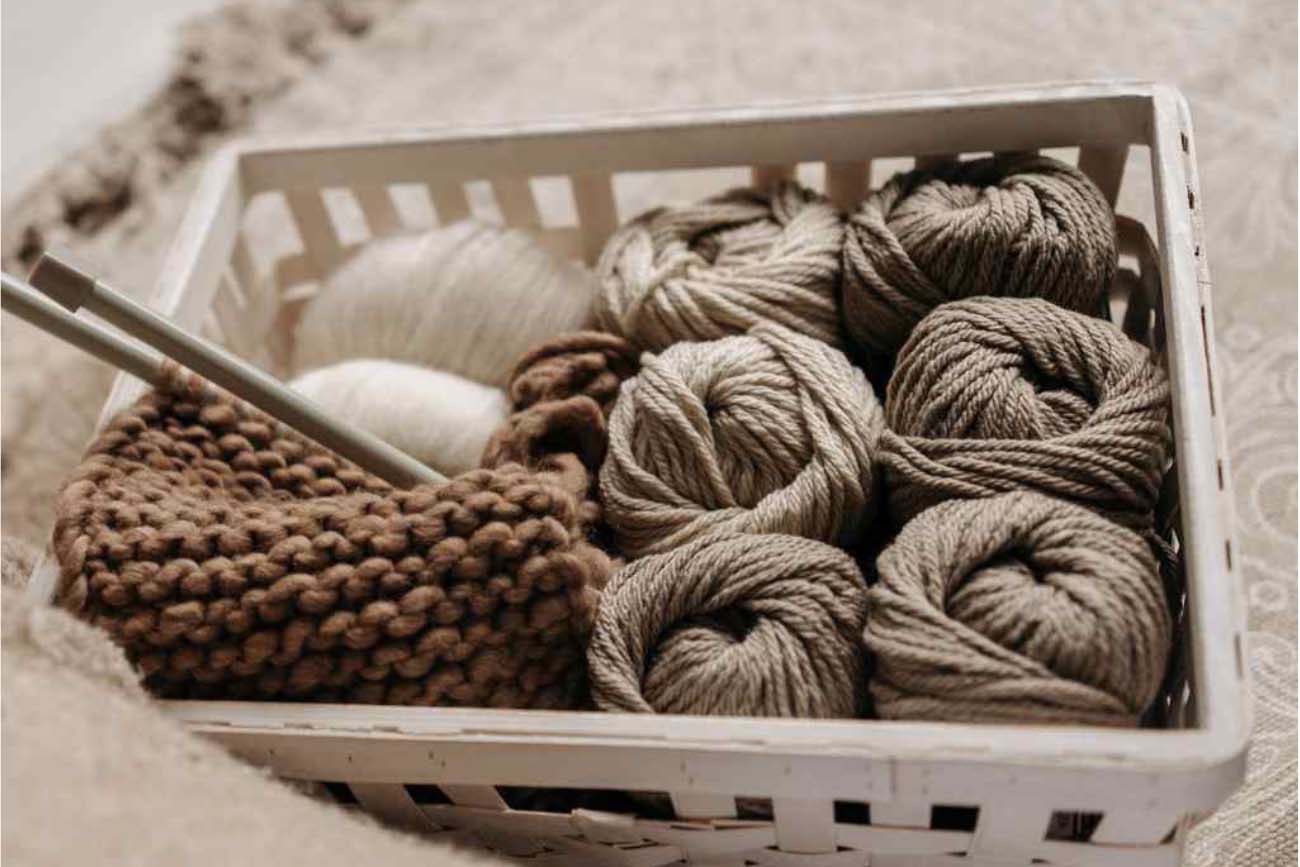
I’m Nicole from the gorgeous island of Guernsey. Today we’re exploring our rich tradition of knitted wool sweaters called ‘Ganseys’ or ‘Jerseys’. We’re delving deep into the history of Jersey knitwear, unwinding the mysterious and ancient origins of the iconic Gansey fishermen’s sweater. After meandering through the threads of time, I’ll reveal the best local crafts markets to buy the best Jersey and Guernsey jumpers, spun from the highest quality British wool.
The British Channel Islands gave birth to uniquely patterned wool jumpers that caught the attention of an emerging Parisian fashion designer at the turn of the last century. Coco Chanel was the first ‘créateur de mode’ to craft knitted fabric from our remote islands into casual daywear and women’s sportswear. Chanel recognised the fabric’s durable stretchability, lightness, versatility, and warm woollen comfort. Coco made owning a jersey knit day suit as vital as having that iconic “little black cocktail dress” that looks great on any occasion on standby in one’s wardrobe.
The fashion legend goes that it was Gabrielle, or “Coco” Chanel herself who discovered the Gansey cabled jumper in the early 1920s before (rather daringly, as we shall discover) opting to use the finer jersey knitted fabrics to create sporty casual ladies-wear. But more of that later!
It was during the elegant Art Deco and glamorous Hollywood-bedazzled 1930s that this common chunky fisherman’s garment became a must-have wardrobe necessity for the emerging jet-set and fashion-conscious glitterati.
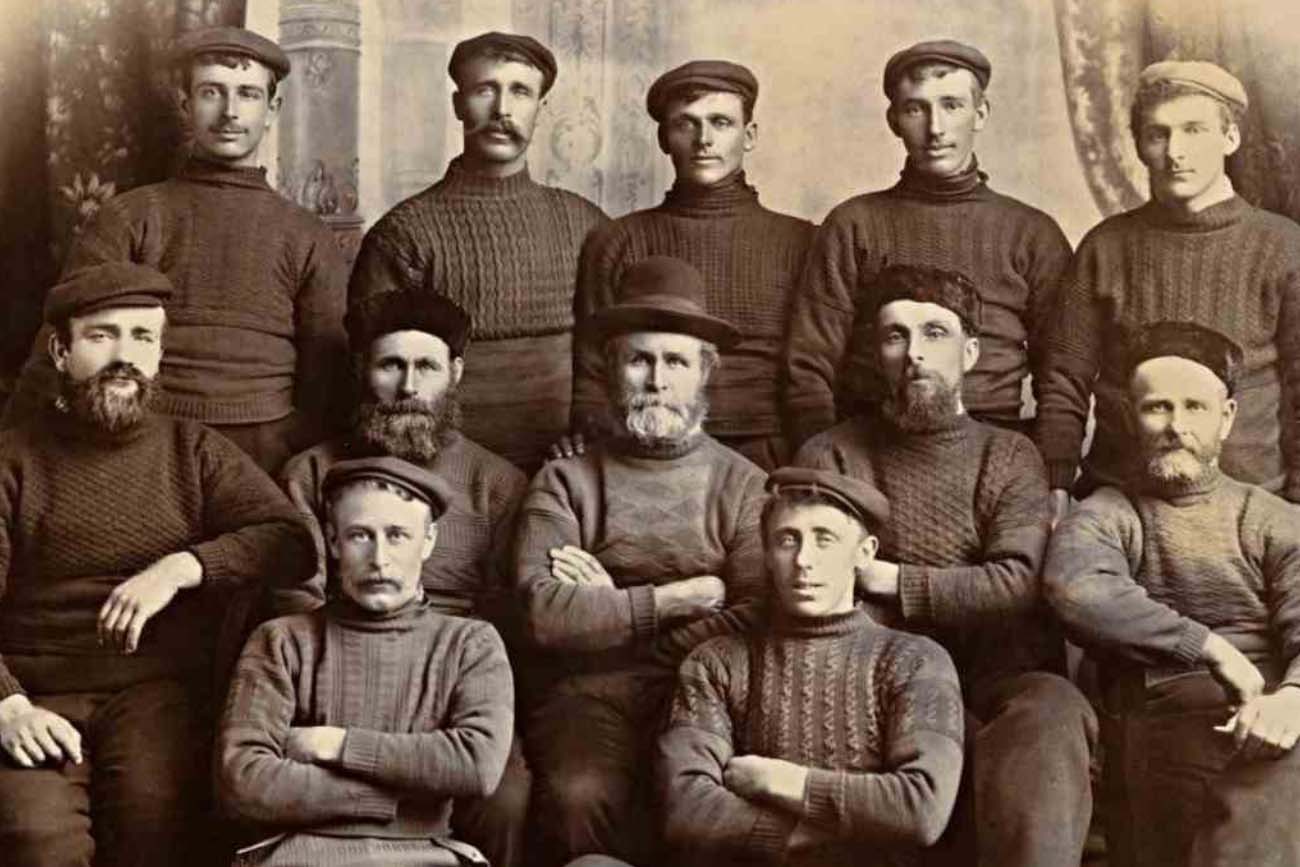
Local Men in a Seaside Town proudly show off their intricately cabled Gansey sweaters.
The cabled and gorgeously patterned Gansy sweater was born from the Channel Islanders’ need to stay comfy and warm during icy impenetrable northern European winters. Ganseys, or guernseys, are traditional jumpers knitted from 5-ply, unoiled, worsted-spun sheep’s wool in a single colour, often a deep indigo blue but cream, red, or white, with prominent purl stitches.
Sheep’s wool has amazing properties that make it ideal for winter garments like sweaters, socks, caps, and mittens because the natural animal fibre is hot, durable, water-resistant, breathable and naturally elastic. Contrary to popular belief, Ganseys weren’t only worn by fishermen but by rural people of all trades, and were kept carefully within families, often handed down from oldest to youngest child through generations. The humble garment became common daily wear from the early 1800s until it was elevated to the luxury fashion status of timelessly elegant sportswear.
It’s a Long and Winding Road! Let’s Unthread the Origins of the Jersey Jumper
Humans settled on the Channel islands about 25 000 years ago, possibly crossing an isthmus or landbridge exposed during tidal lows from the ancient European mainland. Their migration happened long before the Neolithic floods of the melting Ice Age created the English Channel. Venturing across the prehistoric lakes that had formed in primitive boats, the early Neolithic communities established thriving cultures on our secluded shores.
What we know about these ancient ancestors is that fishing was a vital aspect of their daily lives.
To harvest the sea’s bounty, resourceful fishermen wove intricate nets, crafted lines, and ingeniously fashioned traps. The artistry and skill required to create these implements indicate a deep understanding of weaving and knotting techniques, although knitting was yet to be discovered.
The Neolithic settlers knew how to spin plant and animal fibres into sturdy ropes and may have discovered the transformative qualities of animal fibres, such as sheep’s wool, using it to fashion ropes with greater strength and durability. The art of knitting is weaving threads together to create fabric, reminiscent of the intricate weaving and knotting of fishing nets which hints at a possible link between the early textile skills and the emergence of knitting.
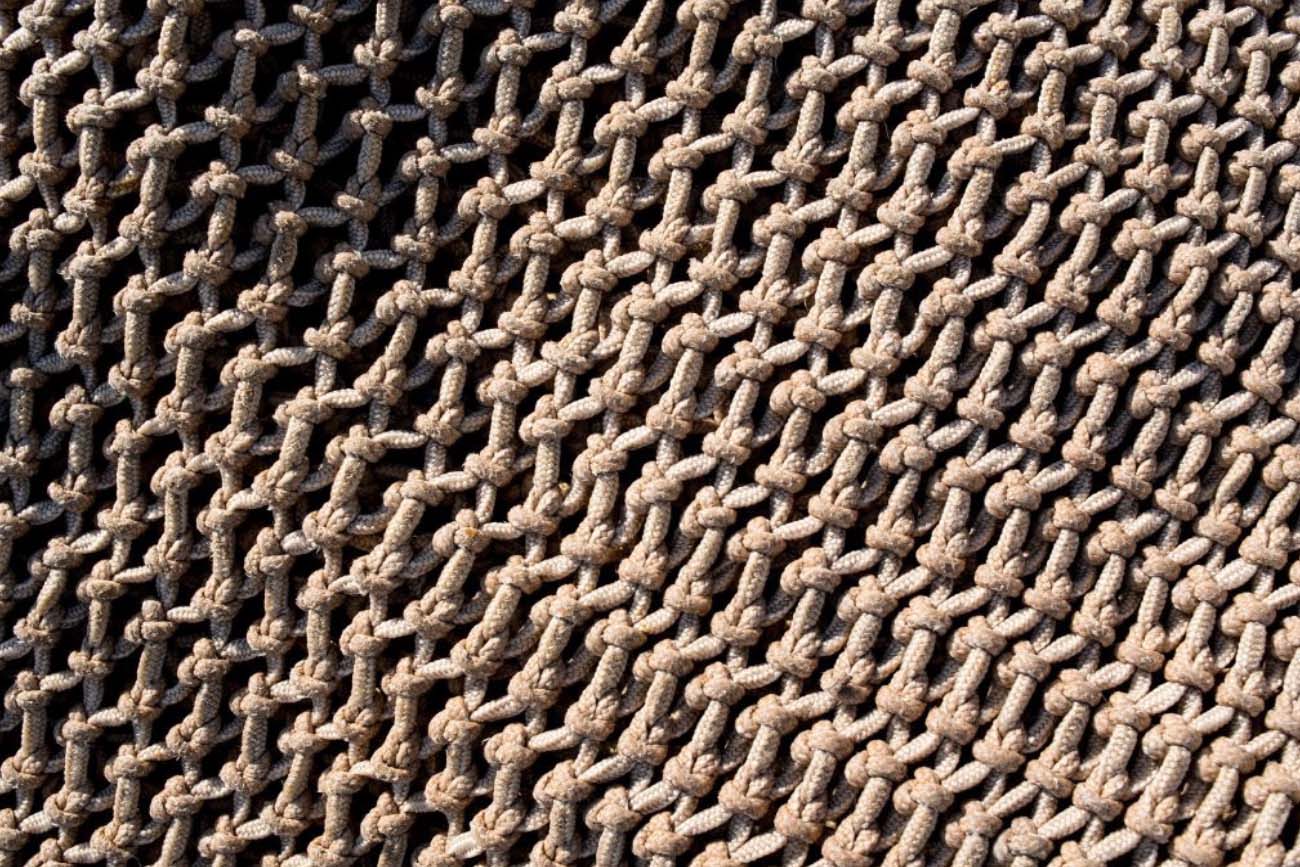
A Fisherman’s Net, Woven from raw hemp fibres
The Homespun High Fashion of the Roman Empire and Fine Weaving
During the Roman era, the Channel Islands received Latin names and assimilated the classical culture as did all their outposts during the time of the Empire. The conquerors were adept at architecture, engineering and governance and left a lasting impression of their culture during the period of occupation (roughly from the first century AD to about the 5th.) But the southern Europeans were also incredibly skilled at weaving yarns and threads of a wide array of natural fibres.
In those ancient times, weavers wove yarn on wooden looms, creating sumptuous fabrics of silk, damask, and velvet for their nobility and roughspun wool, hemp, or flax that commoners wore. Fashion travelled to our islands, and stayed there for a few centuries, as the Greeks and Romans took great pride in Fashion has long held significance in human history, and the Romans were indeed fashion-conscious, using clothing as a marker of status, occupation, and social class.
In Roman society, what people wore spoke volumes about their position and identity.
In Roman society, what people wore spoke volumes about their position and identity. influenced by sumptuary laws, which regulated attire based on one’s social standing. This meant that Romans had specific garments and accessories associated with their rank, profession, and societal class. From the soldiers and seamen who proudly displayed their military uniforms to the administrators and traders who adorned themselves in garments befitting their roles, fashion played a pivotal role in visually communicating one’s position and place in Roman society.
How Woven Fabric Differs from Knitted Yarns
Weaving is very different to knitting. Woven fabrics are created by interlacing warp and weft yarns at right angles, resulting in a structured and quite unyielding fabric and garment shape. In contrast, knitted fabrics are formed by interlocking loops of yarn, resulting in a stretchy fabric that conforms to the body’s shape. But that was yet to come. In the meantime, the Norsemen invaded our islands bringing with them a new way of creating fabrics from spun woollen threads.
The Viking Invasion and the Art of Nail-Binding
By the 9th century, Vikings began colonising the islands following successful raids. Many place names and even the islands themselves bear Old Norse origins. While the Vikings did not possess the knowledge of knitting with two needles, they were adept at a technique known as nalbinding or needle binding.
Nalbinding is a method of creating fabric using a single needle and yarn. It involves looping the yarn through previously created loops to form a continuous fabric structure. This technique allowed the Vikings to craft warm and durable garments, such as socks, mittens, and hats. Nalbinding requires skill and precision, as stitches are created individually, resulting in a distinctive texture and appearance.
From the 10th to the 13th century, the strategically significant Channel Island archipelago shifted ownership between the Duchy of Normandy, England, and the Kings of France. Eventually, in 1259, Henry III of England relinquished his claim to the Norman territories in exchange for the Channel Islands. During this period, the ancient art of knitting spread to the Channel Islands. The movement of people, trade routes, and cultural interactions during these times provided opportunities for the exchange of ideas and techniques.
For hundreds of years, the Channel island’s dwellers were separated during the long winter months from their nearby neighbours, England and France, by the icy northern Atlantic Ocean.
To protect them from the wild elements at sea and in high pastures, fishermen and shepherds honed the art of knitting thick and warm cabled sweaters during the middle ages on their long and lonely vacations away from home. The patterns became unique, distinct to every family and personalised to each individual so that they could be recognised by their woollen apparel alone.
Coco Chanel Time!
Although Jersey wool has been worn by royalty since the middle ages, the durable knit jumped to fame when Coco Chanel, the groundbreaking French fashion designer, discovered its extraordinary potential for women’s sportswear in its lightness, versatility, and comfort and promoted humble Jersey knit to a timeless and iconic fashion look. But more about this later!

Coco Chanel time
The Guernsey Jumper: Why is it a Fisherman’s Favourite?
The Guernsey jumper, also known as the Gansey or the knit-frock, is a knitted woollen jumper that originated in the Channel Islands, particularly in Guernsey, in the 15th century. The garment was originally designed for fishermen who needed a durable warm garment that could withstand the harsh sea winds and cold temperatures. The tightly packed worsted wool fibres and tightly knitted stitches provided excellent resistance to rain and spray, making it ideal for fishermen.
The Guernsey jumper’s design features include a seamless construction and a tightly knitted stitch pattern that provides excellent insulation and durability. The jumper’s unique design features include gussets under the arms for ease of movement, a high neckline to protect against wind and cold, and ribbing around the neck, cuffs, and hem for a snug fit.
Each family in Guernsey had their unique pattern, often passed down from generation to generation, that would be used to identify lost sailors at sea. The knitting tradition was passed down through women in the family, who would often spend their evenings knitting jumpers for their husbands, sons, and other fishermen in the community.
- The Guernsey jumper
- Jumper patterns
Today, the Guernsey jumper remains a popular garment symbol of the island’s cultural heritage. Local crafts markets and artisans in Jersey and Guernsey continue to specialise in producing these traditional garments, using high-quality wool fibres and traditional knitting techniques. In the next section, we’ll explore the Jersey jumper, a unique variation of the Guernsey jumper.
Would you like to learn more about the Channel Islands? Then don’t miss our latest article: Religion in the Channel Islands


